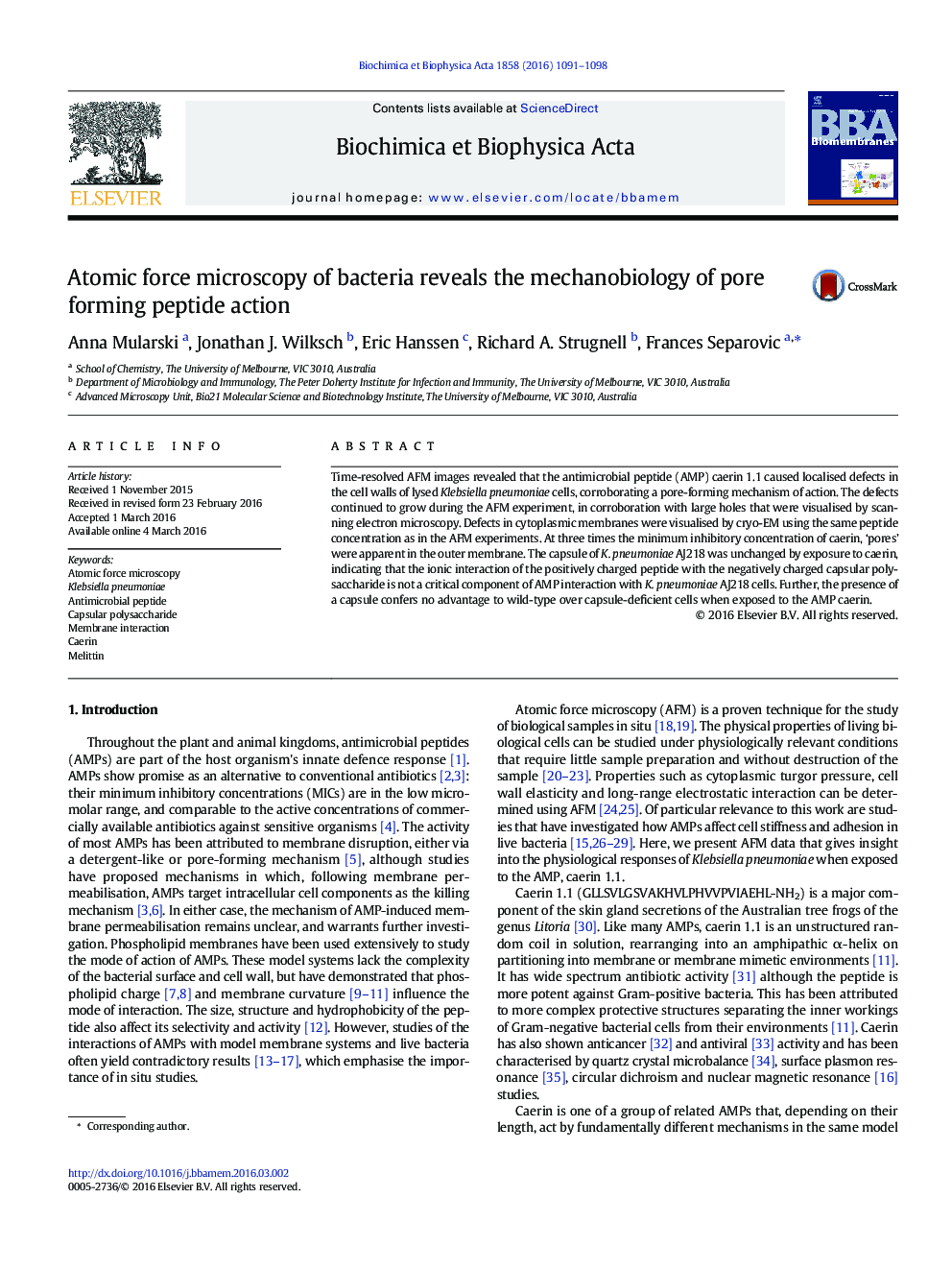| کد مقاله | کد نشریه | سال انتشار | مقاله انگلیسی | نسخه تمام متن |
|---|---|---|---|---|
| 1943960 | 1053169 | 2016 | 8 صفحه PDF | دانلود رایگان |
• AFM was used to study the effect of an antimicrobial peptide caerin on live bacteria.
• Localised damage was visualised corroborating a pore-forming mechanism of action.
• Defects caused by caerin were also apparent in cryo-EM and SEM experiments.
• The capsule confers no advantage to wild-type over capsule-deficient K. pneumoniae.
Time-resolved AFM images revealed that the antimicrobial peptide (AMP) caerin 1.1 caused localised defects in the cell walls of lysed Klebsiella pneumoniae cells, corroborating a pore-forming mechanism of action. The defects continued to grow during the AFM experiment, in corroboration with large holes that were visualised by scanning electron microscopy. Defects in cytoplasmic membranes were visualised by cryo-EM using the same peptide concentration as in the AFM experiments. At three times the minimum inhibitory concentration of caerin, ‘pores’ were apparent in the outer membrane. The capsule of K. pneumoniae AJ218 was unchanged by exposure to caerin, indicating that the ionic interaction of the positively charged peptide with the negatively charged capsular polysaccharide is not a critical component of AMP interaction with K. pneumoniae AJ218 cells. Further, the presence of a capsule confers no advantage to wild-type over capsule-deficient cells when exposed to the AMP caerin.
Figure optionsDownload high-quality image (139 K)Download as PowerPoint slide
Journal: Biochimica et Biophysica Acta (BBA) - Biomembranes - Volume 1858, Issue 6, June 2016, Pages 1091–1098
